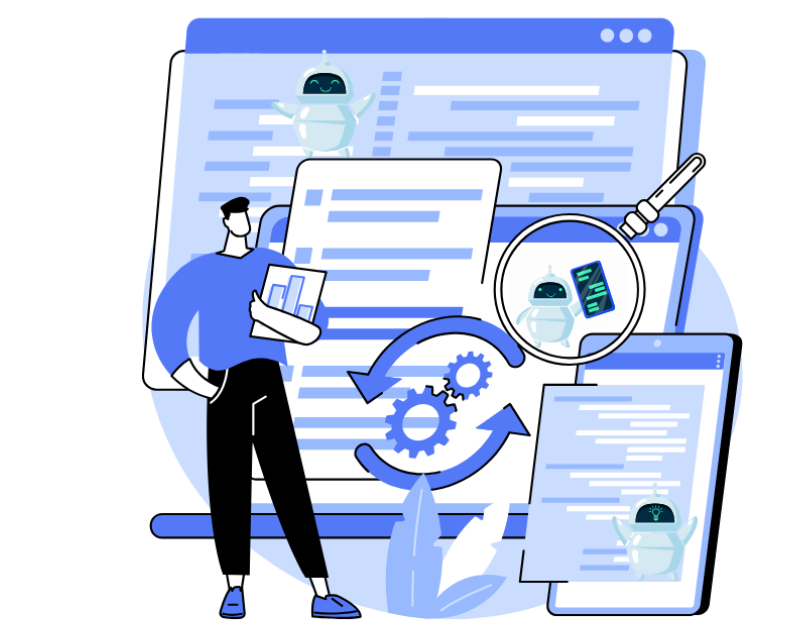We translated an article by David Geffen from NICE, where he shared six metrics that will help you better assess the efficiency of call center managers.
How to ensure that a call center provides quality services?
It is nice to think that agents work with maximum productivity, and each of them is customer-oriented and competent, but is there a way to measure this? Even better: to prove the quality level of the agents’ work?
Let’s consider where the information for statistics comes from. Statistical data is crucial for the productive operation of an inbound call center. Such a department processes thousands of requests daily, so it is important to identify the key metrics that will help evaluate its efficiency.
This article will help you narrow down the list of metrics and focus on those that, when continuously monitored and improved, will truly help your call center grow. Below is a list of the most important call center metrics to track.
1. Customer Satisfaction
Customer satisfaction shows how well your agents handle customer issues. This KPI can be obtained from various sources. Typically, call centers collect information on customer satisfaction by conducting quality service surveys. Regardless of the methods used to obtain this KPI, this metric should always be considered when analyzing the performance of the contact center.
2. First Contact Resolution
First contact resolution is a KPI that is directly related to customer satisfaction, and it’s easy to understand why. It shows the percentage of calls where the agent fully resolved the customer’s issue without the need for transfer, escalation, or a callback to resolve the issue.
Resolving the issue during the first contact is so important that many consider it the most informative KPI. Therefore, this metric should be at the top of any list of call center agent performance indicators.
3. Service Level in the Call Center
Service level is the percentage of calls answered by agents within a specific period of time. For example, customer service managers often say they want to answer 80% of calls within 20 seconds. This is how they determine the call center’s service level. The service level shows whether your business has enough resources to meet customer expectations. The metric lets you know whether customers are quickly connected to team members and whether their issues are resolved promptly.
If your service level is insufficient, it may be time to start using new customer service tools, such as a voice robot, or to expand your staff.
4. Average Handling Time
Average handling time shows how long it takes an agent to service one customer. Often, agent efficiency is evaluated based on how quickly they complete the conversation and move on to the next call.
This happens because:
A) It is important for the contact center to reduce call waiting time;
B) High call handling speed indicates agent efficiency.
But if you evaluate this metric in isolation from others, you may miss an important problem. Is the quality of work suffering for agents pushed to process calls faster? Most customers do not want to spend 45 minutes talking to an agent to solve a problem or make a purchase, but they also do not want to call back two or three times to receive full support or consultation.
Therefore, generally, the goal should not be to shorten call time. However, if you notice that handling time has increased, it may indicate a service process gap that needs to be addressed.
5. Abandon Rate
Abandon rate is the number of calls that are ended before connecting to an agent. When analyzing your abandon rate, keep in mind that there is a small percentage of people who dial the wrong number and hang up when they hear your company’s name in an automated message (e.g., “Thank you for calling ABC company”).
Typically, these calls end within the first 10 seconds, and in most call centers, they make up 1 to 2% of the total number of calls. This number can increase if your number is similar to that of another call center that receives a large volume of calls.
Generally, the abandon rate depends on the speed of response by call center agents. The faster the customer receives a response, the lower the abandonment rate. High abandon rates can lead to decreased sales and customer dissatisfaction. They can also artificially inflate call volume in the future, as customers who couldn’t get through the first time keep calling back until they receive an answer.
6. Cost
This metric will help you understand how your customer support costs (as a percentage) compare to overall revenue. This will allow you to optimize your call center’s operation and make it more cost-effective.
The overall goal of business is to achieve high standards of customer service at minimal cost. Based on this, you need to choose call center KPIs and consider them the sole criteria for assessing agent performance.
It is best to measure the above call center metrics over a certain period of time and track trends. If any metric reaches an unusually high value, you can find the cause and take the necessary steps to resolve the issue without losing much time and money.



